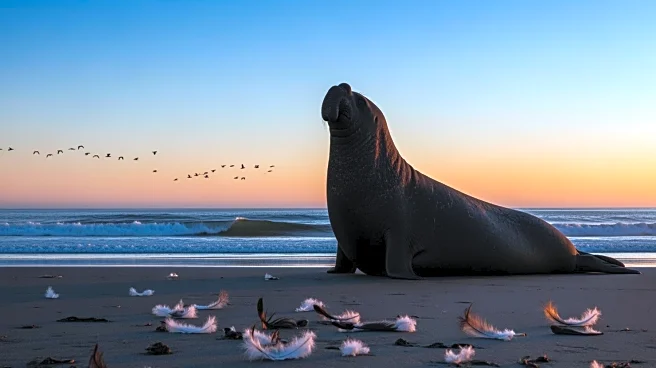What's Happening?
A deadly strain of bird flu, H5N1, has caused significant declines in southern elephant seal populations along the Patagonian coast of Argentina. The virus, which first emerged in poultry in 1996, has mutated
to spread among wild birds and mammals, leading to massive die-offs of seals. Researchers have observed a dramatic reduction in adult seal populations, raising concerns about the long-term impact on the ecosystem. The situation is part of a broader pattern of wildlife affected by the virus, with similar outbreaks reported in other regions.
Why It's Important?
The decline in southern elephant seal populations has profound implications for biodiversity and ecosystem stability. These seals play a crucial role in marine environments, and their loss could disrupt food chains and ecological balance. The spread of H5N1 among mammals highlights the need for enhanced monitoring and response strategies to prevent further wildlife losses. The situation underscores the interconnectedness of global ecosystems and the potential for widespread impact from emerging diseases.
What's Next?
Researchers will continue to study the effects of bird flu on seal populations and explore measures to mitigate the impact. Conservation efforts may focus on protecting remaining populations and restoring affected habitats. The situation may prompt international collaboration to address wildlife disease outbreaks and develop strategies for prevention and response.
Beyond the Headlines
The bird flu outbreak among seals raises ethical and conservation questions about human responsibility in managing wildlife diseases. It highlights the need for comprehensive approaches to wildlife health that consider ecological, economic, and social factors.













